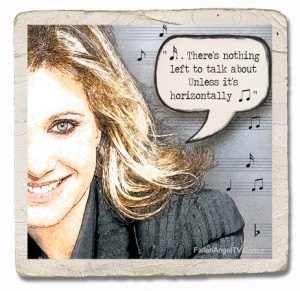(10/21/13) It’s a question that seems to come up a lot lately: Has the institution of marriage become obsolete? In the U.S., you might easily think that’s the case, particularly with all the hubbub in recent years over what even defines a marriage these days along with over 40% of marriages failing. Yet even with the increasing divisiveness and high failure rate associated to the institution, a significant majority (over 80%)1 of Americans believe the basic concept itself is not outdated. Is there any actual rationale behind this belief or is it just a matter of stubbornly clinging to a tradition out of blind habit? Let’s tug at that thread a little and see what unravels.
Pragmatically, modern marriage in America is specifically about the state defining a legal protocol of behaviors regarding property, benefits, legitimacy of children/heirs and rights of survivorship. Sure, many complicate the matter by factoring in romantic, religious or social elements, but it’s important to remember that for a marriage to be legally recognized, the state has to sanction it through licensing and it has to be performed by someone who has been vested with the power to do so by the state. In other words, at its most basic level, it’s about the government’s power over people, plain and simple.
Now, there’s certainly no reason why there shouldn’t be certain legal protections for people involved in relationships where livelihoods and other significant responsibilities are at stake, but does that necessarily mean those protections need to occur specifically through the legal proceeding of marriage, per se? Ah. Therein lies the sticky wicket–and likely the reason why most still believe in the validity of the concept. While there are plenty of other strategies for ensuring that relationship participants can enjoy legal protections similar to marriage, none are as simply codified, broadly accepted and generally inexpensive as the original recipe. For a couple of signatures, a few bucks and a pronouncement from someone fitting the aforementioned state power-vestment thingie, you’re in. So, what’s the boggle?
The legal aspects may be the ground level and the basis for maintaining the institution, but the “expected behaviors” within the relationship have changed so dramatically within the past 100 years that today’s manifestations barely resemble their predecessors–with the legalities themselves gasping to keep pace. Male-led, female-nurtured nuclear families have given way to gender irrelevant roles and blended structures (yet it’s interesting to note that women are still significantly favored in child custody scenarios). Agrarian-heavy lifestyles of the past have been supplanted by industrial and technological market economies that have greatly expanded the opportunities for self-reliance and individual security. In a growing number of cases, one’s “need for legal protection” is less about the abilities of a chosen partner and more about an individual’s own potential to achieve. In other words, the dynamics of modern marriages have shifted tremendously away from what was once considered the “traditional” rationale–rendering them obsolete simply through their own evolution.
Dying (or dead) principles and traditions aside, one major positive is that new trends regarding marriage are increasingly based on individual choice. While the jury may be out as to whether the institution itself and associated legalities are outdated, we think it’s clear that the best chance it has for survival is if it can be increasingly tailored to fit the specific needs of those choosing to be in a given marriage. Indeed, government should protect, but let’s never forget that it also exists to serve.
1. World Values Survey: http://www.wvsevsdb.com/wvs/WVSAnalizeQuestion.jsp

